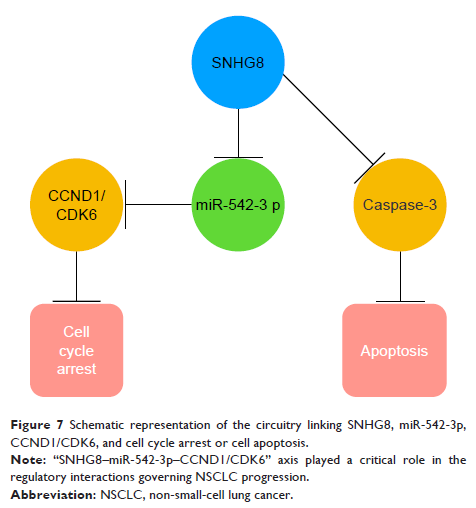9 0 5 7 8
论文已发表
注册即可获取德孚的最新动态
IF 收录期刊
- 2.6 Breast Cancer (Dove Med Press)
- 3.9 Clin Epidemiol
- 3.3 Cancer Manag Res
- 3.9 Infect Drug Resist
- 3.6 Clin Interv Aging
- 4.8 Drug Des Dev Ther
- 2.8 Int J Chronic Obstr
- 8.0 Int J Nanomed
- 2.3 Int J Women's Health
- 3.2 Neuropsych Dis Treat
- 4.0 OncoTargets Ther
- 2.2 Patient Prefer Adher
- 2.8 Ther Clin Risk Manag
- 2.7 J Pain Res
- 3.3 Diabet Metab Synd Ob
- 4.3 Psychol Res Behav Ma
- 3.4 Nat Sci Sleep
- 1.9 Pharmgenomics Pers Med
- 3.5 Risk Manag Healthc Policy
- 4.5 J Inflamm Res
- 2.3 Int J Gen Med
- 4.1 J Hepatocell Carcinoma
- 3.2 J Asthma Allergy
- 2.3 Clin Cosmet Investig Dermatol
- 3.3 J Multidiscip Healthc

SNHG8 被确定为非小细胞肺癌进展的关键调节因子,靶向 CCND1/CDK6 并海绵吸附于 miR-542-3p
Authors Chen C, Zhang Z, Li J, Sun Y
Received 8 April 2018
Accepted for publication 11 July 2018
Published 20 September 2018 Volume 2018:11 Pages 6081—6090
DOI https://doi.org/10.2147/OTT.S170482
Checked for plagiarism Yes
Review by Single-blind
Peer reviewers approved by Dr Colin Mak
Peer reviewer comments 4
Editor who approved publication: Dr Carlos E Vigil
Background: Recently, various dynamically expressed lncRNAs are known to play
critical roles in cancer progression. Small nucleolar RNA host genes (SNHG), a
stable cytoplasmic lncRNA, which have been widely reported to act as an
oncogene in non-small cell lung cancer (NSCLC). As an important member of SNHG,
SNHG8 have been suggested to over-expressed in several cancer disease, while
the biological function in NSCLC remains unclear.
Purpose: Here we investigated the biological function and underlying
mechanism of SNHG8 in human NSCLC.
Patients and
methods: The relationship between SNHG8
expression and clinicopathologic characteristic in NSCLC patients were observed
from January 2014 to December 2014 in 120 NSCLC patients. The expression of
SNHG8 were analyzed by qRT-PCR assay in cancer tissues and cells. Cell
proliferation ability were detected in NSCLC cells by CCK-8 assay. Flow
cytometric analysis were performed to detected the cell apoptosis and cell cycle.
Luciferase assay and Western blot assay were performed on NSCLC cells to
detected the underlying mechanism of SNHG8 in NSCLC. Moreover, Tumor xenografts
in nude mice were performed to detected the in vivo function of SNHG8.
Results: SNHG8 was over-expressed in NSCLC tissues and cells. Patients with
high SNHG8 expression have poorer overall survival (OS) and progression-free
survival (PFS) than the patients with low SNHG8 expression. SNHG8 knockdown
inhibited NSCLC cell proliferation in vitro and in vivo, arrested cell cycle in
the G0/G1 phase via targeting miR-542-3p/CCND1/CDK6, and induced cell apoptosis
via activation of Caspase-3.
Conclusion: SNHG8 negatively regulated miR-542-3p in NSCLC progression by
regulating downstream effectors including CCND1 and CDK6. SNHG8 showed great
potential for the application in the treatment of NSCLC.
Keywords: SNHG8, non-small-cell lung cancer, cell proliferation, miR-542-3p,
CCND1/CDK6, Caspase-3, cell proliferation, therapeutic target
